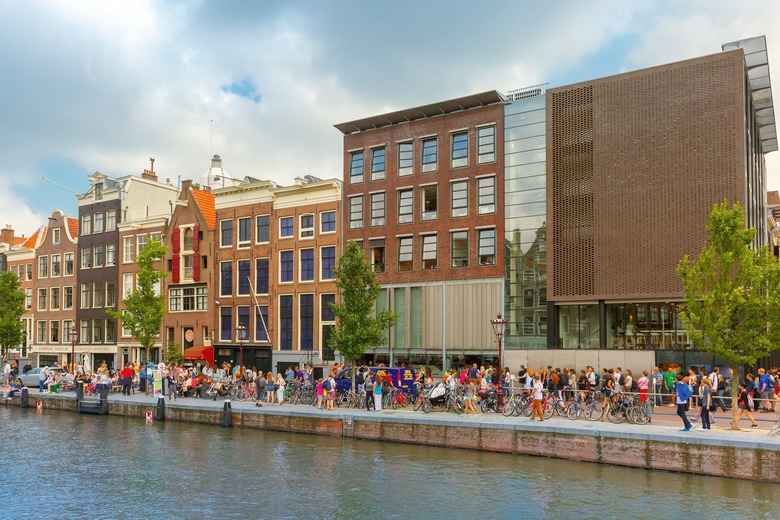Make Time To Visit The Anne Frank House When In Amsterdam
She held the ruler in one hand, pressing the edge up against the wall, in the other hand, a pencil. "Now Anne, stand up straight against the wall, eyes forward. We shall see how much taller you have grown since our last measuring," said her mother. There was a small increase.
This is a simple little task that many mothers all over the world occasionally perform with their growing children. But these particular pencil marks are still left on the wallpaper inside the Anne Frank House. I saw them when I visited this home in Amsterdam, the most highly attended tourist site in the Netherlands.
If you want to visit, it's wise to order your ticket online in advance. The queue is never-ending and present every day with an exception of Christmas, when the museum is closed. After nearly 70 years, this is an amazing testament to the fact that people are still interested in this particular World War ll story. Only a certain number of people are allowed to enter this small home one at a time, so the line moves slowly.
Once inside, you may notice that visitors maintain a quiet and reverent mood throughout the house. People speak in whispers.
The Frank family consisted of the father, Otto; the mother, Edith; the older sister, Margo; and Anne. Anne was born in Frankfurt, Germany, in 1929, but by 1933, Otto Frank feared for the safety of his family in light of the anti-Semitism growing in Germany. The family packed up their belongings and fled to Amsterdam.
It wasn't far enough. In 1940, the Germans occupied the Netherlands and systematically began rounding up Jewish citizens, sending them to concentration camps throughout Europe.
Otto, his family, and four friends went into hiding in 1942. The small rooms in the attic area of the house became their temporary refuge for two years. Anne was 13 years old. She took only a few belongings to keep her company: a box of marbles, a few Hollywood fan magazines, and a diary. For a young girl who didn't have much to do and was confined to a few rooms, this diary became the only outlet to express her thoughts, feelings, and dreams.
Original pages from her diary (protected under glass) are now on display in the house. Anne's handwriting is small and consistently neat. One entry in 1944 revealed:
"I know what I want, I have a goal, I have an opinion, a religion and love.”
She was optimistic in the midst of her dangerous and uncertain world.
Eventually, a still-unknown person betrayed the family. Members of the Nazi S.S. marched to the house, captured the eight hiding dwellers, and shipped them like cattle to various concentration camps.
Edith died of starvation at Auschwitz. Margo and Anne died of typhus at Bergen-Belsen, just days before the camp was liberated. Otto survived Auschwitz and returned to an empty house in Amsterdam. He waited two years before getting the final and devastating news of the demise of his family.
After the capture of the Frank family, a friend had gone into the attic and gathered their personal belongings; he returned these to Otto at the end of the war. Among the items was Anne's diary. Otto read Anne's writings and wept. He said he had never really known his daughter was holding in so many feelings.
Several Dutch publishing houses refused to publish the diary; after the war, most people wanted to forget the tragedies and move on. Finally one publisher said yes.
Anne Frank wrote that she dreamed of being a journalist and a famous writer someday, and her unique voice is one of the reasons The Diary of Anne Frank has become one of the most widely read books in the world. It has been printed in more than 70 languages, and in 2009, UNESCO announced that the diary would be included on its World Heritage List of documents.
Just as the book has helped millions to understand the horrors of the Holocaust, the Anne Frank House continues to share the story of this unspeakable tragedy. Those traveling to Amsterdam should absolutely make sure they set aside the time to visit.
